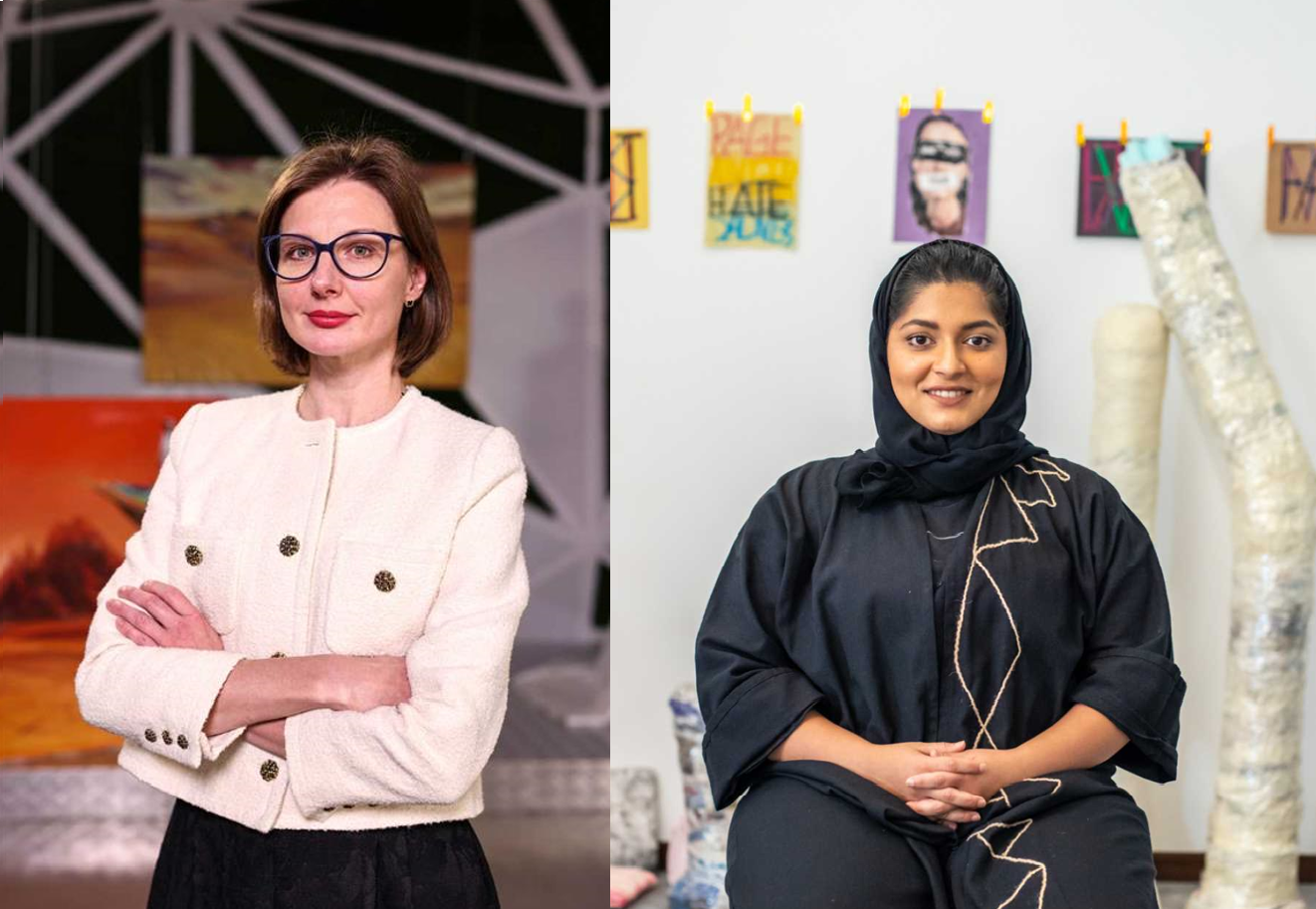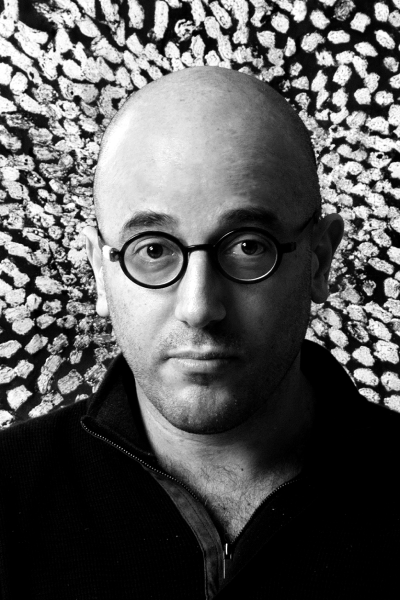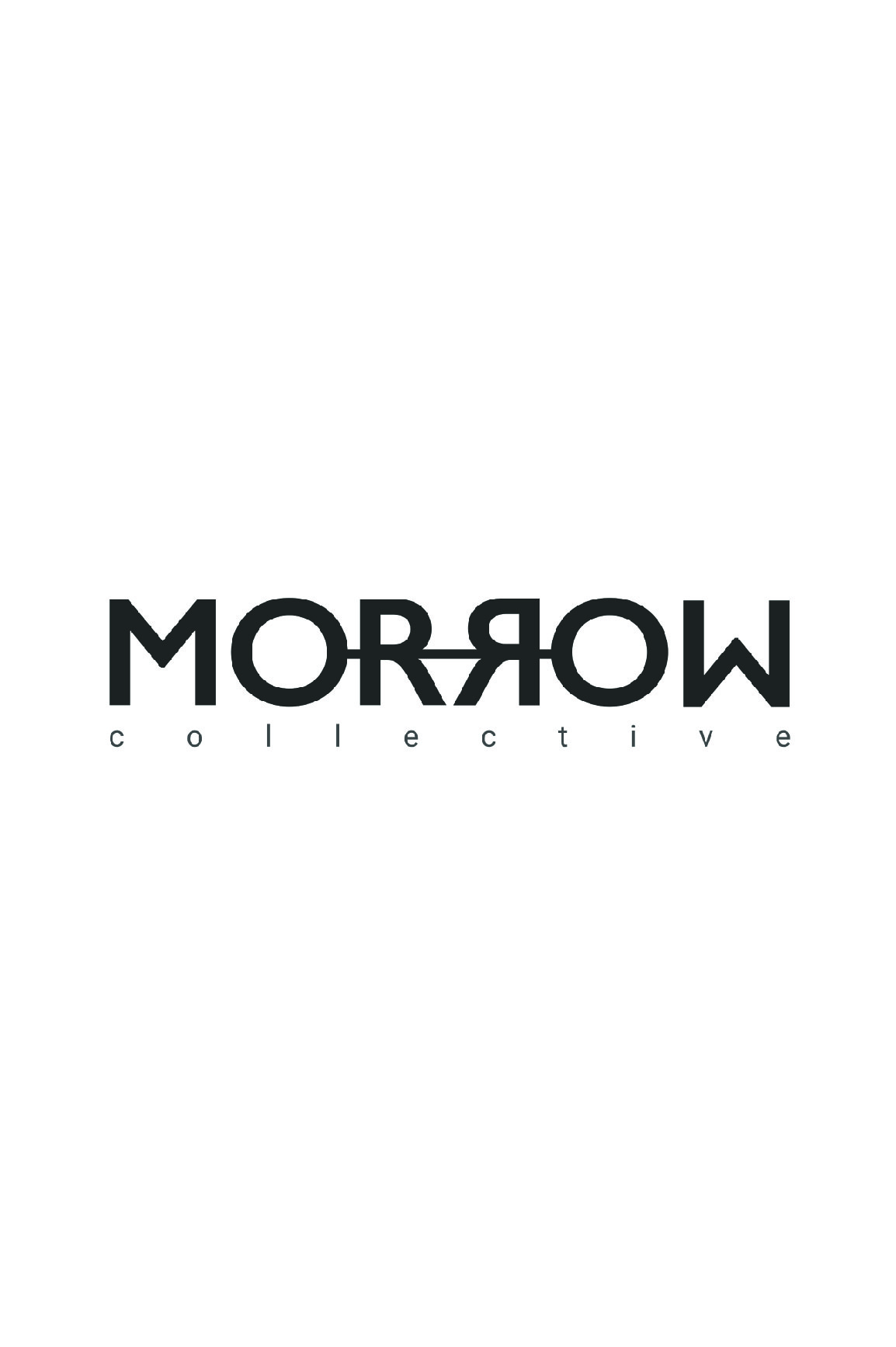
Art + Technology
ART + TECHNOLOGY
An annual community programme that launched in 2017 invites established artists from around the world to Khalifa University to collaborate with technology and art students in a series of workshops. The programme strives to bridge the gap between art and technology in their studies. Previous editions were held in collaboration with Higher Colleges of Technology and Khalifa University and directed towards technology students. In 2022, the programme has expanded to include art students as well from Zayed University, American University of Sharjah, UAE University, and New York University Abu Dhabi. Artists that have participated to date include: • 2022: Virtual NFT Workshop and Mentorship Programme by MORROW collective in Partnership with FBMI • 2021: Alfred Tarazi (Galerie Janine Rubeiz) • 2019: Rashed Al Shashai (Hafez Gallery) • 2018: Feng Mengbo (Hanart TZ) | Carl De Smet (Noumenon) | Alaa Edris (1X1 Art Gallery) • 2017: Feng Mengbo (Hanart TZ Gallery) | Magdi Mostafa (Galerie Brigitte Schenk) | Random International (Galerie Brigitte Schenk)
ART+TECH 2024
An exciting opportunity for students to merge art and technology in innovative ways. This year, our Art + Tech programme features two exceptional artists: Afra Al Suwaidi and Marina Fedorova.


ART+TECH 2023
Welcome to Art+Tech: Exploring Neoconceptual Art, the 2023 programme led by acclaimed artist Nujoom Alghanem. This year, we are thrilled to offer 21 talented students from across 6 universities, a transformative experience from June 15th to November 14th. Through nine mentoring sessions and three workshops, participants will delve into the realms of art and technology.
Workshop Dates: 15 June – 14 November 2023
Exhibition Dates: 22 November 2023 – 21 January 2024, Location: Al Jahili Fort, Al Ain
Art + Technology (Developed by MORROW collective in Partnership with FBMI) 2022
Art + Technology: Virtual NFT Workshop and Mentorship Programme Dates: 6-8, 13 & 15 June 2022 Running from the 6th to the 15th of June, the Art + Technology Virtual NFT Workshop and Mentorship Programme returns as part of the art fair’s year-round programming. It will be bringing art and technology university students together with NFT experts MORROW collective, who acting as mentors for the course with special guests crypto-artist VESA, digital and AI artist, Orkhan Mammadov and co-founder of CrytpoSheikhs podcast Anas Bhurtun, who will teach the students about these new digital art forms. The annual Art + Technology programme was launched by Abu Dhabi Art in 2017 with the aim of bridging the gap between the fields of art and technology. Previous editions were held in collaboration with Higher Colleges of Technology and Khalifa University and directed towards technology students, but this year the programme has expanded to include art students as well from Zayed University, American University of Sharjah and UAE University. For this year’s edition, participants studying art will be paired with those studying technology to create their own NFTs which will be exhibited during the fair in November. Selected NFTs will also be awarded titles for the categories of Artists’ Choice, MORROW’s Choice, and more.
Art + Technology 2021
“Viral Images” proposed a reaction to the clutter of images in which we live; a paradigm shift imposing on its participants the limit of the production of a single image. Viral Images was a crash course in image making alternating the urgency of expression with the necessity of reflection. It aims to inscribe the individual practice of each aspiring artist within a greater tradition of image making. In his essay Disordered World, Amin Maalouf writes “today the role of culture is nothing less than to provide us with the intellectual and moral tools for survival”. In these times of crisis that message cannot be more urgent leaving us, cultural practitioners with the responsibility to develop these tools. The workshop programme included: 1. Visit to Louvre Abu Dhabi 2. Virtual lecture series with Alfred Tarazi 3. Studio: students to create a digital collage under the mentorship of Alfred Tarazi

Art + Technology 2019
The third edition of Art + Technology workshops allowed students to create an artwork that was exhibited at Khalifa University. The students joined artist Rashed Al Shashai in creating a vibrant installation that uses light and mixed media. They discovered how everyday objects that one might view as ordinary can be elements in building exciting artwork. They learned about how contemporary artists use technology as a medium of expression. Students worked in groups to build the different parts of this public installation.
Art + Technology 2018
The second edition of Abu Dhabi Art’s Art + Technology consisted of three workshops that were led by both international and local established artists, including Feng Mengbo, Carl De Smet (Noumenon) and Alaa Edris. Subjects ranging from smart materials to music and portraiture were explored. Students were able to use their skills and newly acquired knowledge about art to experiment with new art forms including sound art, video art and interactive media. Abu Dhabi Art 2018 Art + Technology Workshops: 1. Carl De Smet (Noumenon) Workshop | “Obscure Object” Carl De Smet worked on sculptures in motion. For 2018 the artist created “The Obscure Object”, an interactive sculpture that responds to near-field communication, together with students from the University. 2. Feng Mengbo Workshop | “Karaoke Box” Feng Mengbo has collaborated with students on developing a Karaoke experience for music lovers, who are invited to share their talents online. The Karaoke Box was activated on the Corniche and at Manarat Al Saadiyat in the lead up to Abu Dhabi Art. 3. Alaa Edris Workshop | “Experimental Portraiture” In this interactive workshop, Alaa Edris shared her experience of working with technology to create contemporary art. Using the advanced 3D hologram technology, the artist works with students to transform portraits of the viewers into 3D holograms. Students also learn about the history of portraiture and about how artists used their self-portraits in contemporary art. Dates: 24 June – 10 July 2018 Location: Khalifa University


Art + Technology 2017
The initiative that was first launched in 2017 brought leading artists together with students from the university, for a series of workshops that explored ways of making art through the use of technology. Abu Dhabi Art 2017 Art + Technology Workshops: 1. Feng Mengbo In this workshop, students created an artwork that combined real-time electronic music and visual images using oscilloscope or laser generator projection. The artist shared his methodology which creates meditation through an electronic art form. 2. Magdi Mostafa The artist worked with the students to build a circuit exploring sound production. At the end of the workshop, the students created a group sound piece. Magdi Mostafa introduced the students to sound as an art medium that contemporary artists use in their work. 3. Random International This artist led workshop gave the students an opportunity to create an interactive artwork using technology and dry ice. In addition, the students were able to create prints on canvas which were then exhibited at Abu Dhabi Art 2017 in Manarat Al Saadiyat.
ART + TECHNOLOGY ARTISTS

Alfred Tarazi
2021 Art + Technology Artist
Alfred Tarazi
2021 Art + Technology Artist

MORROW collective
2022 Art + Technology
MORROW collective
2022 Art + Technology

Rashed Al Shashai
2019 Art + Technology Artist
Rashed Al Shashai
2019 Art + Technology Artist

Carl De Smet (Noumenon)
2018 Art + Technology Artist
Carl De Smet (Noumenon)
2018 Art + Technology Artist

Alaa Edris
2018 Art + Technology Artist
Alaa Edris
2018 Art + Technology Artist

Feng Mengbo
2017 and 2018 Art + Technology Artist
Feng Mengbo
2017 and 2018 Art + Technology Artist

Alfred Tarazi
2021 Art + Technology Artist
Alfred Tarazi (b.1980, Lebanon) is a multi-disciplinary artist based in Beirut. In 2004, he graduated with a degree in Graphic Design from the American University of Beirut. His entire body of work, ranging from painting, photography, drawing, digital collage, sculpture and installation, revolves around complex historical investigations. His work has been acquired by prestigious public and private collections including the British Museum and the Museum of Modern Art.
In an artistic practice shaped by the ultimate event horizon of the Lebanese Civil War, Alfred Tarazi deploys his visual strategies in order to dig out fields of memory, placed haphazardly in a vast expanse of the present tense, often without direction or destination. A narrative emphasis occurs, at the root of which, the artist is unearthing critical and historical tools to read past events, provided by the past itself in the manner of a reluctant heritage. Tackling the Lebanese obsession with history, Tarazi playfully interrogates its questionable sources and selective archival practices, highlighting the role of the past as both origin and destination. With merciless realism intersecting both fiction and historiography, the artist articulates the spectacle of war as a syntax of the unimaginable, broken down, piecemeal, to a lived present. This archaeology of the ‘now’ does not aim to restore, but rather, to represent a historical condition through fragments of anomaly and singularity. The field of representation, however, prevents distance and enclosure: it is a laboratory, a journal, a political inquiry, a memory site and a reality marker.

MORROW collective
2022 Art + Technology
MORROW collective is an NFT fine art consultancy founded in March 2021. MORROW collective works with galleries, artists and museums to introduce them to the NFT space and provides a premium service for new and existing collectors. Comprising a team of professionals with comprehensive experience in contemporary fine art, crypto art, curation, marketing, communications, and technology, MORROW collective supports established and emerging crypto artists by hosting events and exhibitions that showcase NFT artworks in VR, AR and IRL. Through a multi-pronged approach, MORROW collective consults and guides our partners seamlessly into the Metaverse. MORROW collective are owners of multiple gallery spaces across the most sought after and exclusive Metaverse platforms and collectors with an extensive portfolio including some of the world's leading crypto artists. Fatima Bint Mohamed Bin Zayed Initiative (FBMI) is MORROW collective’s social enterprise partner.

Rashed Al Shashai
2019 Art + Technology Artist
Saudi artist Rashed Al Shashai uses objects and imagery he finds as signifiers of the everyday, creating a “semantic field” through which philosophical questions, primarily the purpose of human existence and the functions of society, can be explored. Through playful forms that mine the mundane, Al Shashai provokes our examination of the omnipresence of media, a global descent into superficiality and the growing epidemic of apathy that has come to define modern life.
Born in Al Baha, Saudi Arabia, in 1977, Al Shashai holds a Master of Visual Arts degree and is a prominent figure in the contemporary Saudi arts scene. As a conceptual artist and arts educator, Al Shashai has influenced a new generation of Saudi talent while also nurturing local artistic practices as a founding member of the Saudi Arabia Fine Arts society and the Art Education Society. In 2009, he established the Tasami Centre for Visual Arts, an independent space that supports cutting-edge art in the Kingdom, and was the organisation’s director until 2014.

Carl De Smet (Noumenon)
2018 Art + Technology Artist
Noumenon, founded by Carl De Smet, is a research and development company based in Antwerp (Belgium) and Belgrade (Serbia). Drawing on the inspiration of different scientific fields, noumenon focuses on developing ‘programmable materials’ and pioneering the approach of ‘smartification of objects’.
Noumenon re-imagine products where material systems exhibit an increasing functionality for self-assembly that could transform everything. Noumenon’s team has successfully developed Shape Memory Polyurethane, which are chemical mechanised tools for designing ‘self- reconfiguration products’. This technological novelty of ‘self-reconfiguration’ wherein ‘the material is the mechanism’ creates a wide range of strategic business outcomes. Smart material machines leap beyond the traditional organisation of objects; outputs emerge in unseen ways, such as customers receiving e-furniture in their mailbox, which assembles itself when required. Even a new class of robotic devices – material robots – are conceivable.
Alaa Edris
2018 Art + Technology Artist
Alaa Edris uses photography, film and performance to enact experimental mappings and manipulations of her social and urban environment. Acting as anthropologist, cartographer and sci-fi voyager, she contends with dominant issues in the field of Arab artistic research, including the construction of gender, the relationship between tradition and progress, and language as a medium to identify, shape and articulate a culture.
Her background as a photographer and filmmaker is evident across her practice, where individual works act like freeze-frames and provocative vignettes from which dense narratives expand. Observations of her immediate context – the UAE in the late-2010s – are manipulated through more fantastic conduits to realise uncanny dioramas and instigations, uncomfortable in their simultaneous familiarity and distortion. She mines the collective realities of morphing urban environments, the fertile bed of folklore and the forceful semiotics of gender and belief to re-propose and re-purpose the remnants of architecture, myth and social history. Each work acts as a nexus, where her excavation of these collective materials lights imagined, parallel possibilities for re-interpretation and progress – often fantastic yet potent with uncanny familiarity.
A graduate Fine Arts from the University of Sharjah, with a concentration in electronic media, Edris’ work has been presented in exhibitions across the region and internationally including ‘Is Old Gold?’, DUCTAC, Dubai, 2017; ‘Al Haraka Baraka – UAE Unlimited Arab Exploration’, Maraya Arts Centre, Sharjah, 2016; ‘In the Absence of Script’, Maraya Art Centre, Sharjah, 2014; as part of the touring exhibition ‘Past Forward: Contemporary Art from the Emirates’, USA, 2014–2016; and the Moving Image Art Fair, London, 2013. She graduated from the Salama bint Hamdan Emerging Artist Fellowship in 2015 and completed a residency at Fondazione Cini in Venice in 2011. She currently lives in Abu Dhabi where she works as Programs Curator at The NYUAD Art Gallery.
Feng Mengbo
2017 and 2018 Art + Technology Artist
Feng Mengbo is a Professor at the Central Academy of Fine Arts (CAFA) and graduated from CAFA himself in 1991. He is the first Chinese artist to use computers in his work, and is well known for his video game pieces. Besides interactive art, his works feature calligraphy, painting, photography and music. Feng Mengbo has had solo exhibitions at Hanart TZ Gallery since 1994; Holly Solomon Gallery 1998; Dia Center for the Arts, 2001; The Renaissance Society, 2002; Museum of Contemporary Art, Taipei, 2003; Shanghart Gallery, 2003; Shanghai Gallery of Art, 2010 and 2012; Chambers Fine Art Gallery, 2010 and 2012; UCCA, 2009; PS1, 2010; Today Art Museum, 2011; and Madein Gallery, 2017. His main group shows include Venice Biennial, 1993; Kwangju Biennial, 1995 and 1997; Lyon Biennial, 1997; Johannesburg Biennial, 1997; Documenta, 1997 and 2002; ISEA, 1998; Arts Electronica, 2004; Shanghai Biennial, 2004; and the Guangzhou Biennial, 2002 and 2008. MoMA, Guggenheim, LACMA and the Fukuoka Asian Art Museum have collected his works.
